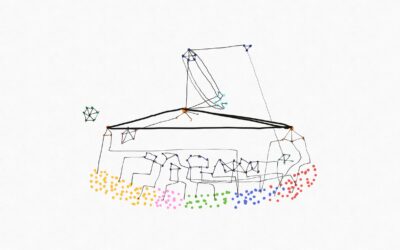Resilience and perseverance – the two virtues almost always attributed to the poor. The glorification of their hardships and our awe for their ability to survive. Haven’t we started looking at them akin to cockroaches? They never die with a single stroke, it takes multiple blows to put their flapping legs and antennae to rest. The COVID-19 pandemic is estimated to push an additional 88 million to 115 million people into extreme poverty this year, with the total rising to as many as 150 million by 2021, depending on the severity of the economic contraction – suggests a World Bank report from 2020.
After a rough year unfolded due to the pandemic in 2020, the second wave setting in and the looming possibility of a third wave, will there be a return to the pre-pandemic situation? At present, the chances of recuperating look slim. As we went from village to village interacting with migrant workers, many of whom had returned to their home, the impact of these disruptions on their financial lives and wellbeing was apparent.
On the face of it, conditions seemed to be much more stable than last year – ration was available, mobility was not absolutely restricted, work had not completely stalled. However, the vulnerability had increased. How?
Amar*, who appeared to be around 25 years old, had just returned from Surat where he worked in the Saree cutting industry and was paid Rs. 10,000 per month along with accommodation and food. After returning, he worked for a total of 10 days April as a construction labourer in Udaipur, earning Rs. 300 per day. He had somehow managed to repay his two loan instalments in May but if he isn’t able to find work soon, sustenance will become difficult. In this act of balancing his finances, he also had to borrow Rs. 2,000 from a friend in the village to take care of his family of five. Not only has he lost a higher paying job and struggling to find work in the village, he has now also accumulated debt.
While we were speaking with Amar, his neighbour Amba Lal ji*, also joined the conversation. Dressed in shirt and trousers, he exclaimed how the Government was wrong in imposing a lockdown. “Aadmi kaise kamayega, kaise khayega jab sab kaam band hai?” Amba Lal ji who worked as a mason in and around his village had not gotten work since the last one and a half months, as no new construction work was being carried out near his village. His agitation was obvious.
Ramli Bai’s* family had gone through a similar ordeal. As we walked to her door, we were greeted by her husband who immediately told us that she had taken the cattle out for grazing. We asked about their well being and got the response “Theek hain sa”. One of their sons who had returned from Rajkot was staying in his house next door, planning to leave as soon as the lockdown opened. Ramli Bai appeared 10 minutes later with four of her goats and two buffaloes. She looked exhausted from the long walk in the scorching heat and sat down to explain that she heard about MNREGA work starting again in her village, which was stalled since the surge of Covid cases.
In the last two months, the couple survived only because of the money she received from her last haziri (labour work) which had finished in March. With no inflows in the last two months, life had become tougher. Their son had gone back to the city after the unlock last year, but ended up without any savings because he had to repay the debts which were acquired last year, leaving little to support his family of five.
While some have managed to sail through with little savings, others have ended up borrowing – if available, from friends and family, or else from moneylenders at as high as 10% per month. Recently, a colleague mentioned about a woman he met – she had mortgaged her silver jewellery to send her visibly underage son to find work in the city.
I, too, had encountered two young girls, as I was making my way to the office through crammed gullis one morning when they asked, “Didi, aapke ghar pe kaam milega kya?” They were sisters in search of work. I asked if it was their first time looking for work. The elder one, around 9 years old, tried to convince me by saying “Haan par hum dono saara kaam kar denge”.
In most cases, I’d agree that resilience is a positive word, but in the context of the poor and marginalised people, I find it offensive. It is convenient to label them as resilient while they have no choice but to show up every day, despite the circumstances. Some would claim that they have stood the test again, but it would be criminal to ignore the realities.
Here are some of them:
- Well-being outcomes – The limited financial flexibility that existed has vanished and priorities have been rejigged. There is no option but to eat only what is grown at home, cut down on health expenditure for a chronically ill family member, pull children out of school and make other such suboptimal decisions.
- Child labour shooting up – As schools are shut again and households are forced to make ends meet, all hands need to be on the deck, young or old. Children are easily hired at construction sites as helpers because contractors can save money by paying them less than what they would have to pay an adult. Young boys too find this an opportune time to explore newer environments through migration.
- Informal internal credit systems dwindle – Low-income households actively take part in complex but necessary internal borrowing systems usually free of cost, as the first line of defence in a crisis situation. In a community where everyone is equally vulnerable and deprived, who do you depend on, in difficult times?
- Asset building takes a backseat – As most households are in need of quick cash, sale of assets like cattle and ornaments are inevitable, setting them back many years in terms of asset ownership and security. Either they would borrow more to build, or put off the decision unless in case of construction activities that are urgent.
- Rise in over-lending and indebtedness – With accumulating expenses and payables, these low-income households are forced to borrow by mortgaging their assets, often from moneylenders and informal institutions which are exploitative.
While the second wave of the pandemic seems to have muted in the past couple of months, the effects of the disruption of work and life as we knew it, are slowly unfolding. Though immediate responses would flow in from the government, preventive action are needed to curb leakages in the delivery systems, creating relevant local employment and following conservationist principles at source.
*Name changed to maintain confidentiality




0 Comments